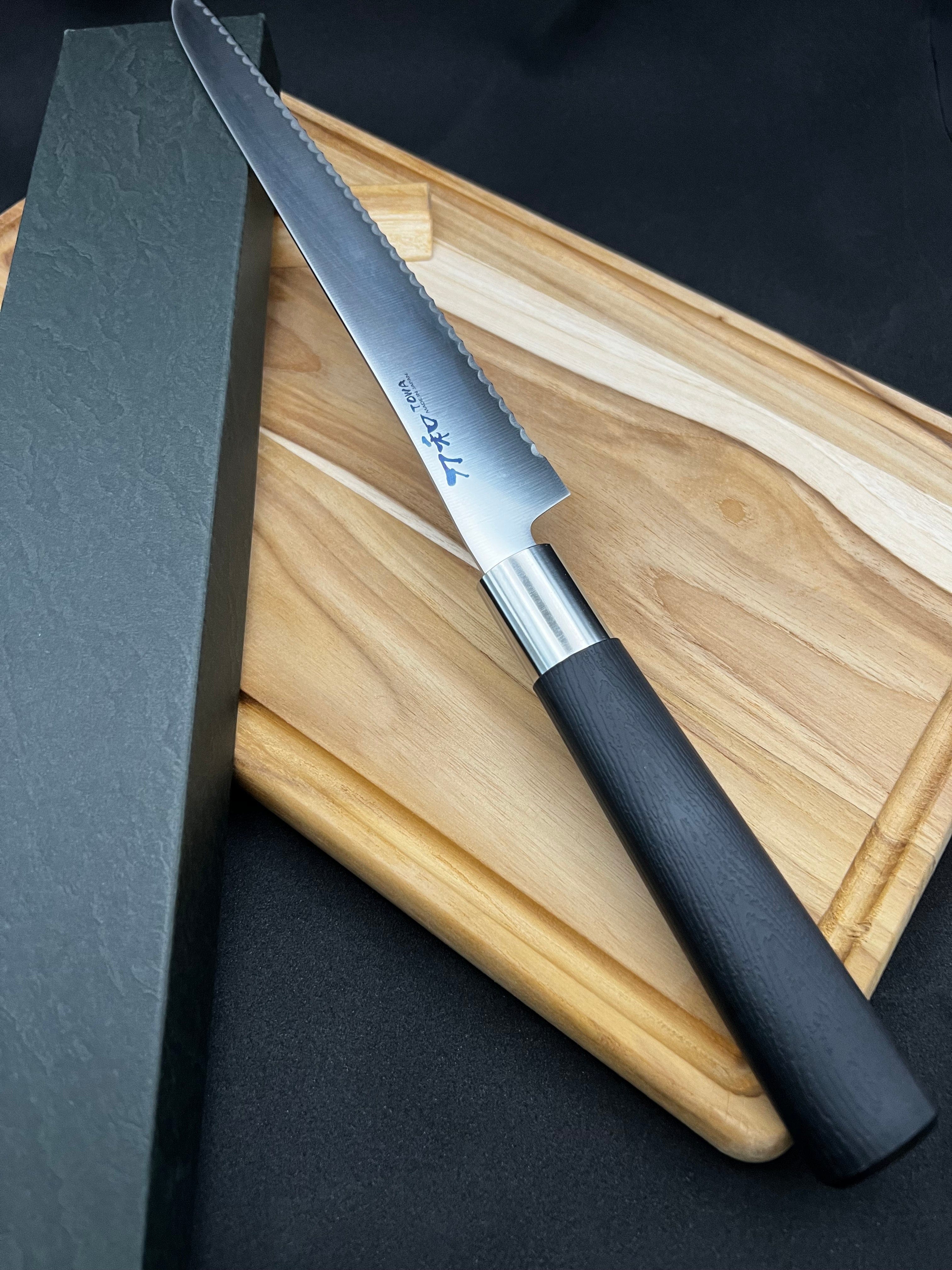
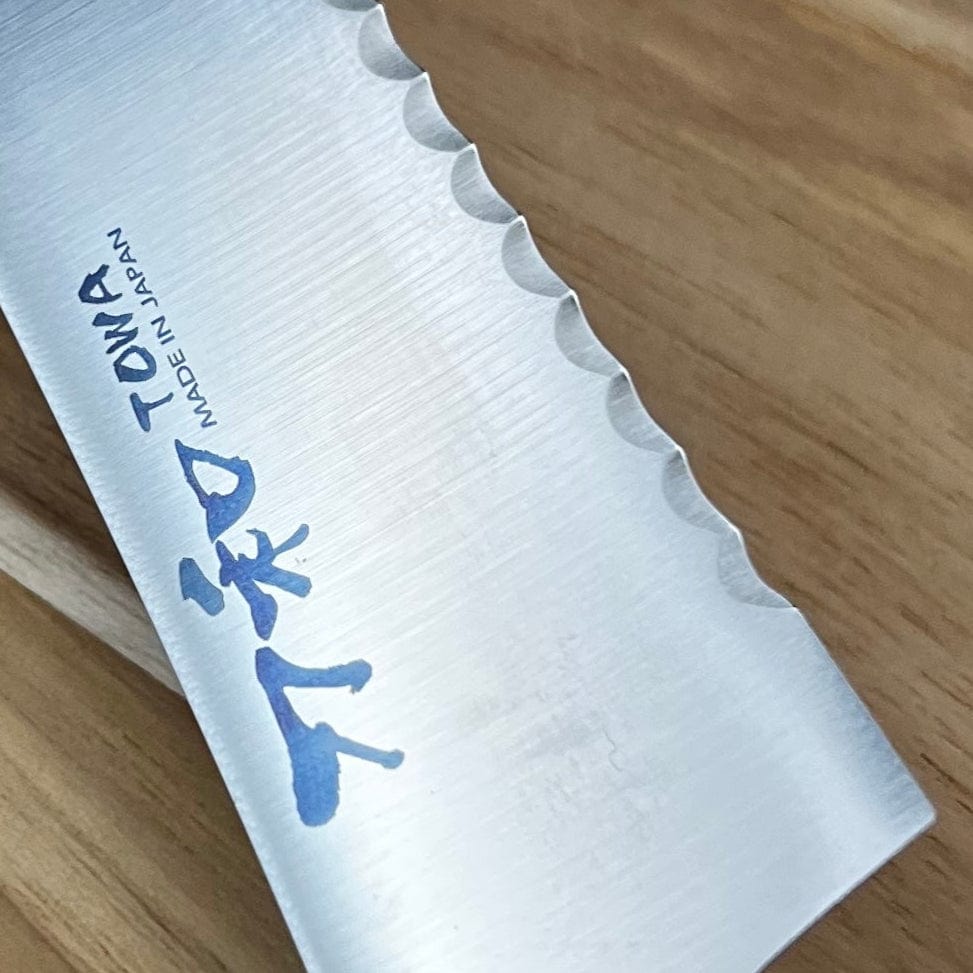
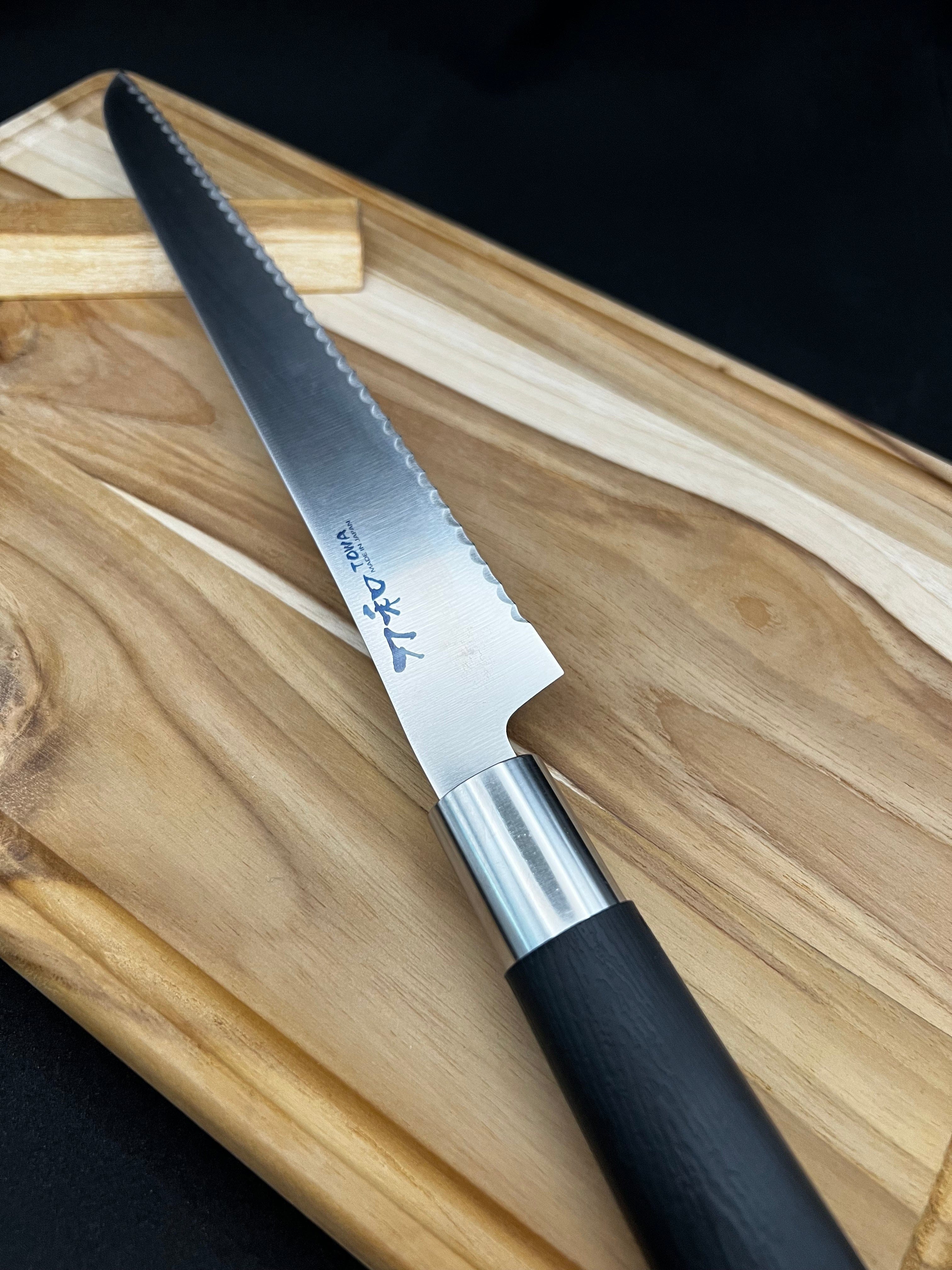
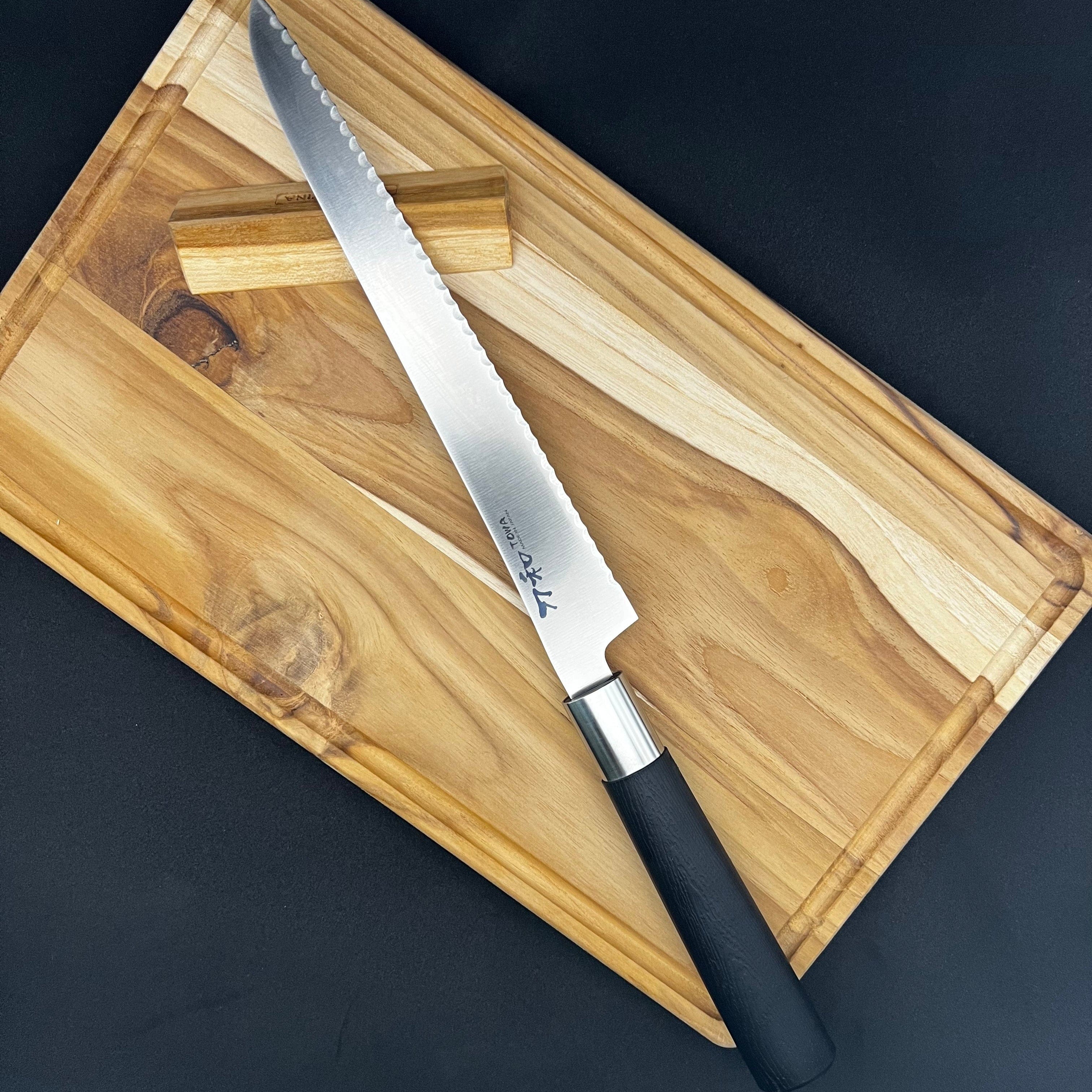
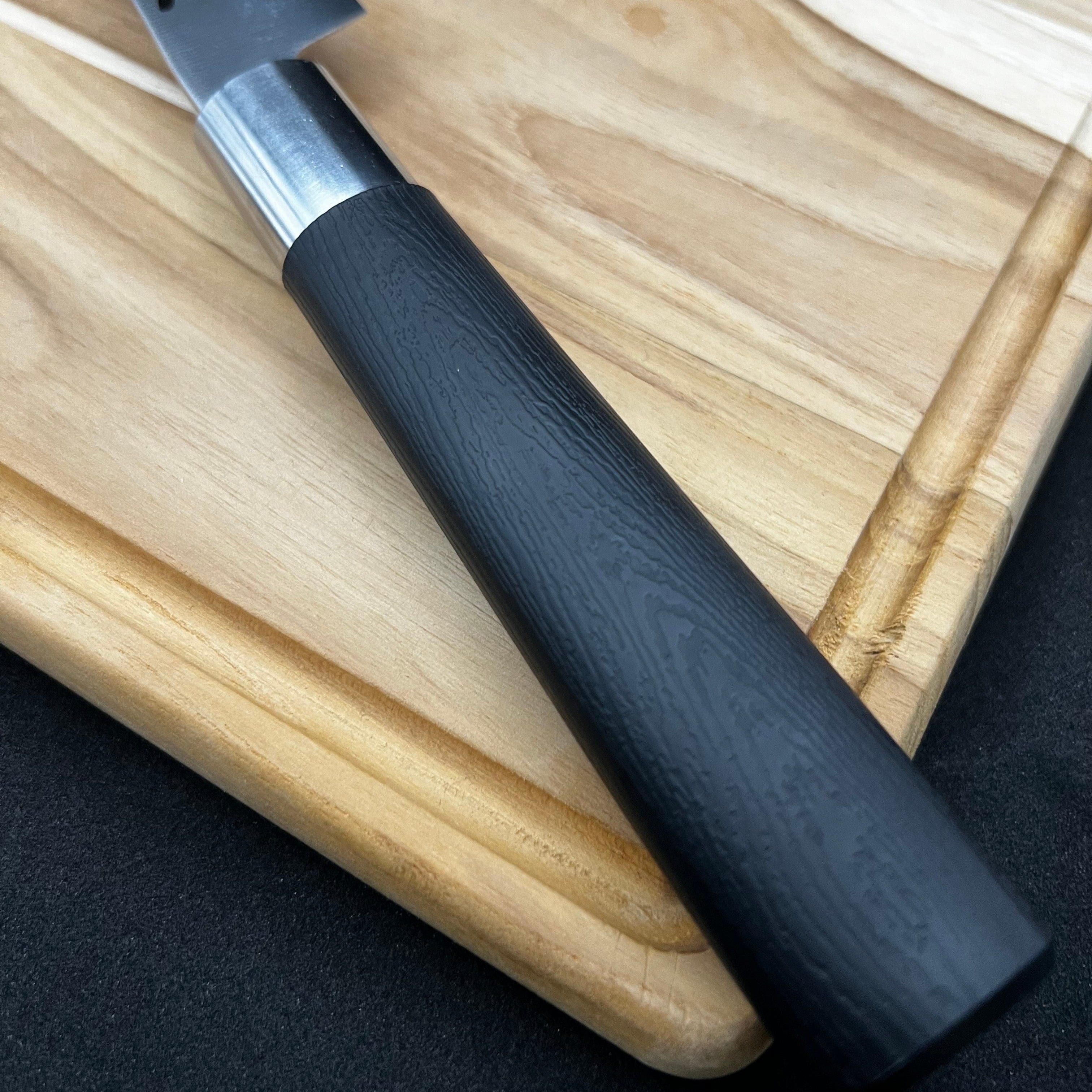
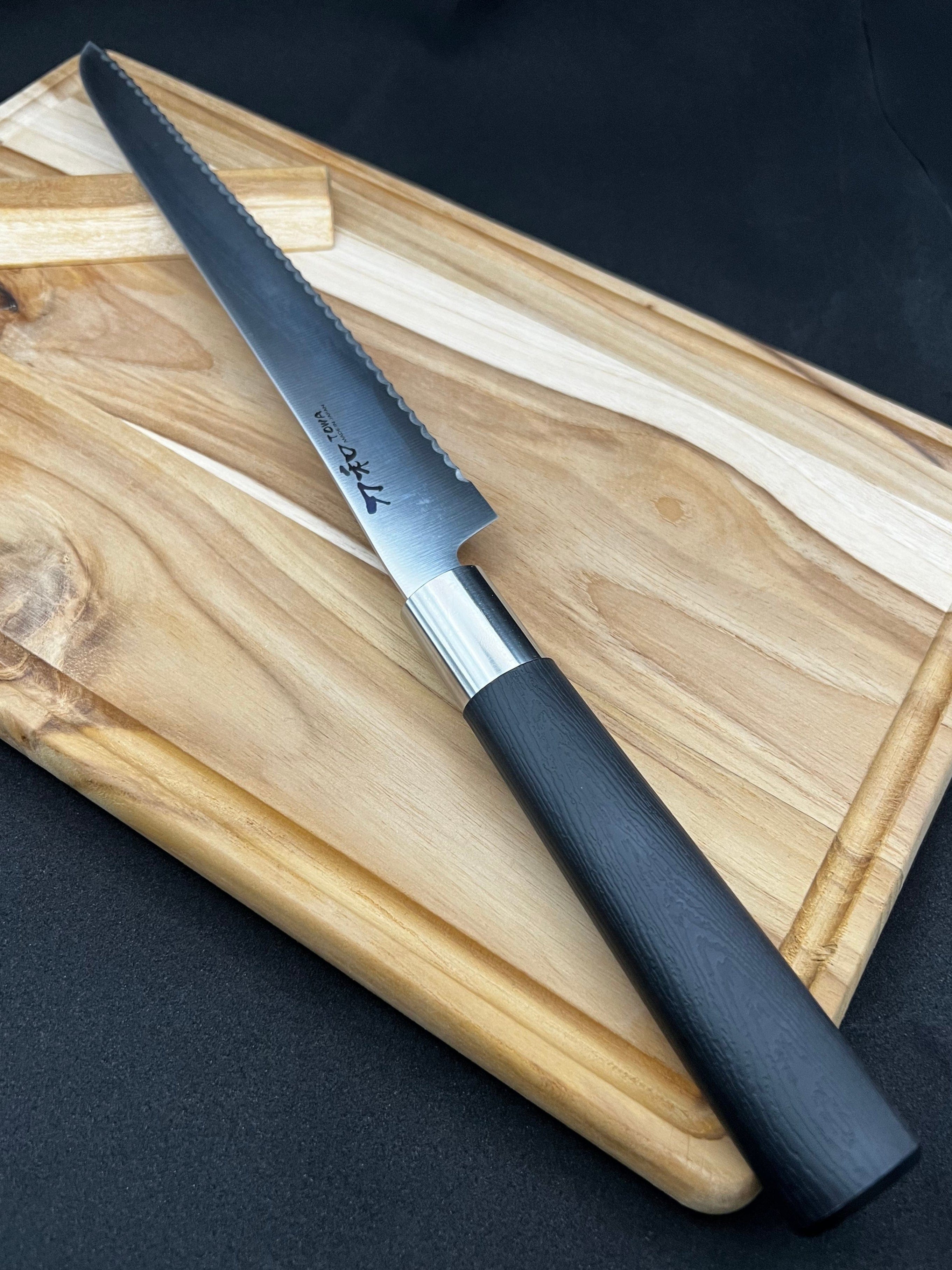
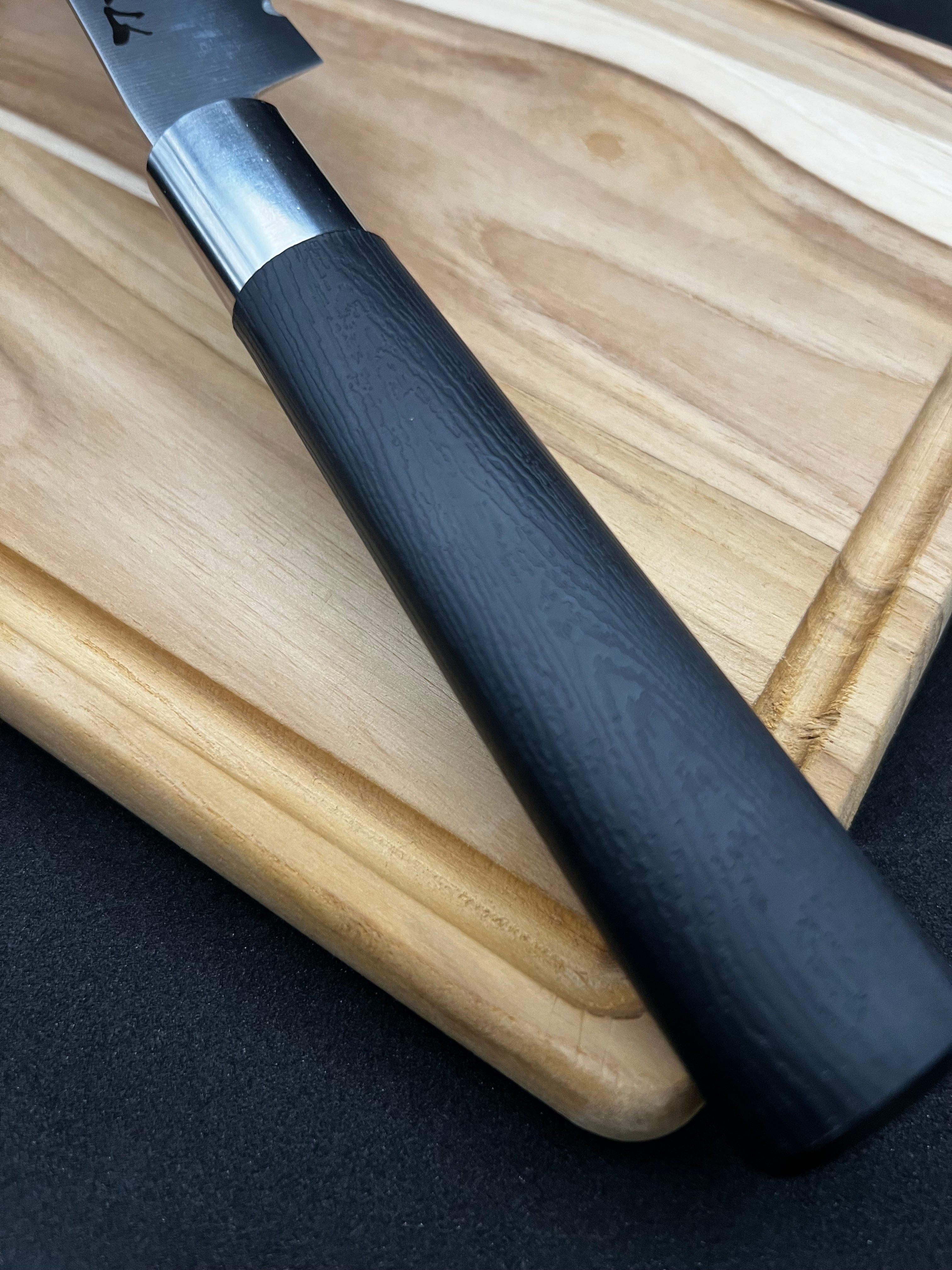
Bread Knife 8.3 Inch - 21 cm
Fast & Secure Delivery from Japan to your Door [Shipping Policy]
Shop Safely with Encrypted Checkout and Verified Gateways.
Pairs well with

Bread Knife 8.3 Inch - 21 cm
If you have any questions, you are always welcome to contact us. We'll get back to you as soon as possible, within 24 hours on weekdays.
-
Shipping Information
Use this text to answer questions in as much detail as possible for your customers.
-
Customer Support
Use this text to answer questions in as much detail as possible for your customers.
-
FAQ’s
Use this text to answer questions in as much detail as possible for your customers.
-
Contact Us
Use this text to answer questions in as much detail as possible for your customers.
Precision Meets Clean Design – Towa Bread Knife with Wave-Edge Blade
Main Category: Japanese Kitchen Knife
Subcategory: Bread Knife with Wave-Edge Blade
Designed for the modern kitchen, the 8.3-inch (21cm) Towa Bread Knife represents a new era of Japanese craftsmanship. Engineered with the professional chef in mind, this knife blends cutting-edge materials with traditional attention to detail. The result? A sharpness that feels intuitive—and a design that feels just right in your hand.
Its 6A molybdenum vanadium steel blade is forged with a unique 38-point wave edge, allowing it to slice cleanly through crusty artisan breads or delicate brioche without crushing or tearing. Unlike traditional Japanese blades that may suffer from rust or poor sanitation over time, this one is built to last. Resistant to corrosion and boasting a clam-like curvature that bites effortlessly into bread, it delivers professional-grade performance with every use.
A]Sustainable & Hygienic Handle
The newly developed handle is where innovation truly shines. Crafted from a sustainable polypropylene resin infused with inorganic materials, it addresses long-standing issues such as rot, bacterial buildup, and loosening over time. The smooth, non-slip woodgrain finish offers a comfortable, balanced grip—whether you’re carving a holiday loaf or prepping daily lunches. It’s also heat resistant up to 230°F (110°C) and can be sterilized by boiling—something rarely possible with traditional Japanese handles.
Whether you're upgrading your kitchen tools or searching for a gift that impresses, the Towa Bread Knife brings confidence, beauty, and cutting precision into your culinary routine.
Crafted in Japan. Made for the world.
Product Information
Care instructions
FAQs
All you need to know about Japanese Knives.
What makes Japanese knives different from Western knives?
Japanese knives typically feature harder steel, thinner and sharper blades, and lighter handles compared to Western knives. These characteristics allow for precision cutting, especially suited for detailed culinary tasks, but require careful maintenance to preserve sharpness and avoid damage.
How should I maintain and sharpen a Japanese knife?
Regularly hand-wash and dry your knife immediately after use to prevent rust and corrosion. Sharpen using a whetstone designed specifically for Japanese knives, maintaining a consistent angle (usually around 15 degrees). Avoid dishwashers and harsh cleaning methods to preserve blade integrity.
Can Japanese knives be used for any type of food preparation?
While versatile, certain Japanese knives are specialized: Gyuto (chef’s knife) handles most ingredients, Santoku excels in chopping vegetables and meats, while Yanagiba is specifically suited for slicing sashimi and seafood. Selecting the right knife enhances performance and preserves blade condition.
Why are Japanese knives often more expensive?
Japanese knives are handcrafted, employing traditional methods and premium high-carbon steel, which contributes to their exceptional sharpness, durability, and aesthetics. This artisanal craftsmanship and the high-quality materials used typically result in higher pricing compared to mass-produced knives.
Are Japanese knives suitable for beginners?
Yes, beginners can effectively use Japanese knives, but it’s essential to start with user-friendly styles like Santoku or Gyuto, known for balanced handling and versatility. Proper care, handling, and regular sharpening practices will ensure a positive experience, even for novices.

